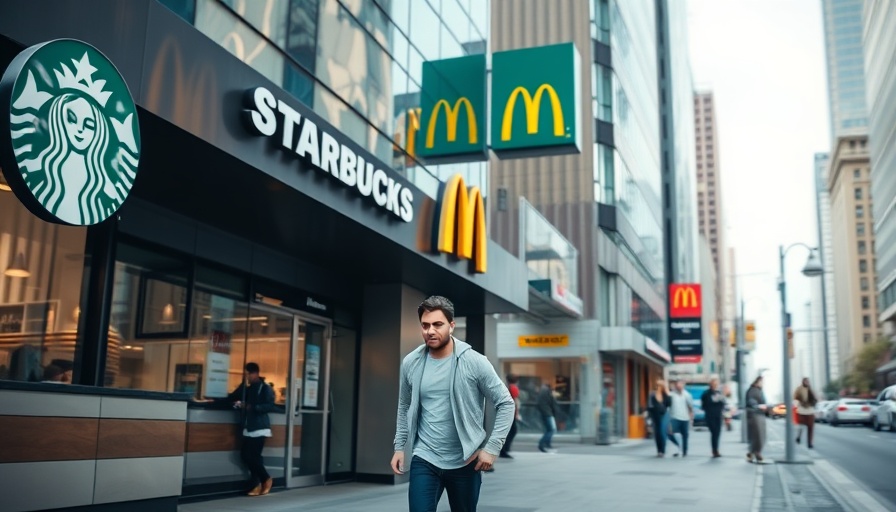
Why McDonald’s is Winning the Coffee War
In a surprising turn of events, McDonald’s has regained the crown as the most valuable restaurant brand in the U.S., dethroning Starbucks after nearly a decade of its reign. While these two giants may seem like unlikely competitors, their strategies have now converged around coffee, significantly altering the landscape of the fast-food industry.
The Long Game: How McDonald's Elevated Its Brand
For years, Starbucks has emphasized its reputation as a "third place"—a cozy alternative to home and work where customers can relax over a cup of coffee. In contrast, McDonald's strategically positioned itself as a versatile destination by investing heavily in its McCafé brand. With improvements in coffee quality and a commitment to providing a welcoming environment—complete with free Wi-Fi—McDonald's is effectively redefining itself. They aren't merely selling fast food but are creating a place where people feel comfortable to unwind, similar to Starbucks.
Analyzing Recent Brand Value Changes
According to newly released data, McDonald's brand value soared by 7%, reaching $40.5 billion, while Starbucks saw a staggering 36% decrease in its value, now standing at $38.8 billion. This shift signals not only a change in fortune for these companies but also a transformation in consumer preferences. The rise of McDonald’s underscores a growing recognition that convenience and price can outweigh the pursuit of a trendy atmosphere.
The Future of Fast Food: Coffee as King?
As McDonald's capitalizes on the lucrative coffee market, it positions itself to capture a loyal customer base—those who prefer practicality over ambiance. Coffee has been described as a high-margin, habit-forming beverage, often leading customers to frequent establishments more than convenience food places. By integrating better coffee into its offering, McDonald’s aims to become the go-to location for breakfast and beyond, making it pertinent for Starbucks to re-evaluate its operations.
Starbucks' Struggles: A New Direction Under Leadership
Starbucks is not sitting still. To regain its market dominance, it enlisted Brian Niccol, formerly of Chipotle, to rejuvenate its brand. Recent modifications, such as the reinstatement of in-store free refills and a waiver on charges for milk alternatives, reflect an earnest attempt to improve customer satisfaction. However, the road ahead is complicated, as transforming brand perception and reclaiming customer loyalty will require consistent and thoughtful execution over time.
Action Trends in the Coffee Market
The battle between fast food giants underscores major trends in consumer behavior and preferences. Coffee lovers are becoming increasingly price-sensitive without sacrificing quality. This shift in demand might also lead to greater innovation in coffee offerings across different chains. As McDonald’s leads in this segment, it sets precedent for fast-food chains' approach to non-burger beverages. Expect to see more brands following suit in diversification.
What This Means for Consumers
As a consumer, the implications of these changes could be significant. Availability of high-quality coffee at a lower price in McDonald’s could encourage more frequent visits and alter where people choose to socialize. Additionally, with Starbucks' adjustments, customers may find renewed value in the Starbucks experience, potentially benefiting from the competitive landscape.
Final Thoughts on the Shift
In conclusion, the evolving dynamics between McDonald's and Starbucks highlight a crucial shift in the fast-food and beverage landscape. As consumer preferences lean more towards value, quality, and convenience, brands that adapt strategically will thrive. For coffee lovers and casual diners alike, the battle over the coffee cup is far from over, and both companies are transforming in ways that might redefine your next coffee run.
 Add Row
Add Row  Add
Add 




Write A Comment